10+ Real Events That Turned Into a Chapter of a Horror Story

It’s normal for planets to be a bit tilted on the side. The Earth is tilted at a 23-degree angle. That’s why we have seasons. It’s summer when the part of the world where you are leans closer to the Sun. It works the opposite way, too — it’s winter when you lean away from it. But, Uranus is tilted more than normal. It lies at a 98-degree angle, which has a huge effect on its seasons. Each season on Uranus takes 21 years to play out. Something to think about next time we complain that winter lasts forever.
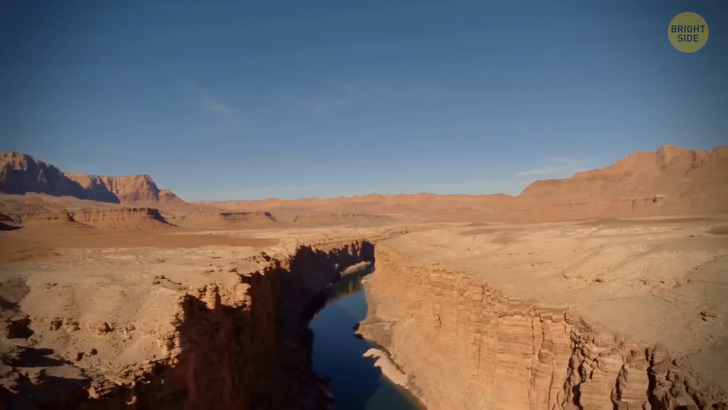
Here on Earth, we measure distances in minutes and hours, maybe even days. It takes 10 minutes to walk to your best friend’s house or 15 minutes to drive to your favorite cafe. But in space, it’s different. It’s vast, which means we measure how long it takes to get to a certain point in years or, in most cases, light-years. So, if you want to walk to the Moon one day, that would take you nine years to span the 239,000 miles. Perhaps you’d like to take a ride to the nearby star, Proxima Centauri? Maybe if you kept the pedal to the metal at a constant speed of 70 mph, you’d get there in about 356 billion hours, or around 40.5 million years.
Mars contains the biggest valley we’ve discovered so far. It’s a pretty impressive system of canyons 2,500 miles long. That’s 5 times longer than the Grand Canyon. Researchers first spotted it back in the 1970s. A bank of volcanoes located on the other side of the canyon ridge probably helped form this valley.
We haven’t discovered a planet completely made of diamonds yet, but on some planets, it actually rains diamonds. On Jupiter and Saturn, gas giants of our solar system, lightning storms turn abundant methane into soot, which we also know as carbon. The soot falls and transforms into graphite. Further graphite transforms into diamonds with a diameter of about 0.4 inches. Before you start figuring out how to book a diamond-collecting field trip, know that these diamonds don’t last. After they enter the planet’s core, they melt.
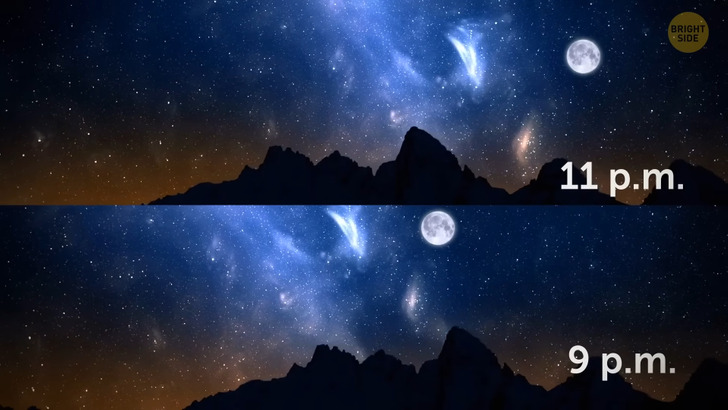
Ever noticed how when you’re stargazing two nights in a row at the same time, let’s say 9 p.m., the stars stay in the same place, but the Moon doesn’t? There are two reasons for that. First, it depends on what time you go stargazing. For instance, if you go outside at 8 p.m., and tomorrow you look for it at 11 p.m., you’d see the Moon in two pretty different places. In this case, even the stars take different places in the sky since our planet is spinning. As you know, it takes 24 hours for it to make one full circle. That means that, from our point of view, it seems like both the sky and everything up there is just moving around us one time per 24 hours. In the same way, the Sun changes its position, rising and setting every day. So, if you went outside two nights in a row at the same hour, in most cases, you’ll have to wait for an extra half an hour or even more until the Moon gets back to the same position as the night before. The stars are pretty much standing still — it seems like they’re moving, but that’s just because the Earth is spinning. But the Moon is ACTUALLY moving around our planet and goes through different phases. For example, a new moon is when it’s completely dark in the sky. A full moon is when its dayside is facing the Earth. It takes approximately a month for it to finish one circle around the Earth.
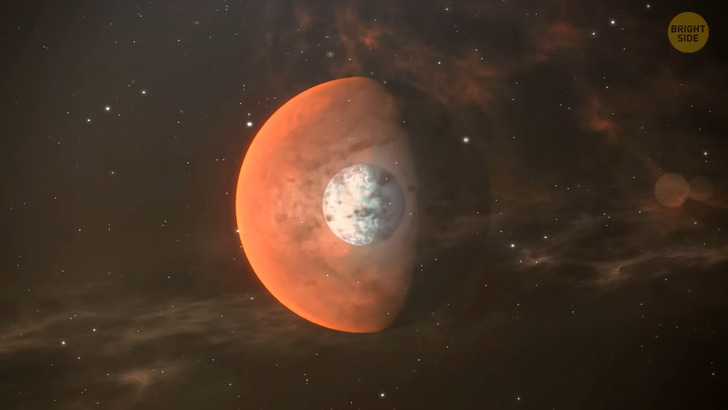
Maybe you’d be luckier on a diamond-collecting expedition on this next planet, 40 million light-years away from the Earth? Scientists used to call it “super-Earth.” A super-Earth is generally a planet way bigger than ours. This planet, for example, is double the Earth’s size. It’s so close to its star that it makes a full circle around it in less than 18 hours, which means the year there is pretty short. Since it’s so close to its star, its temperature goes up to a whopping 4,900 degrees F. Because of the heat, in combination with the planet’s density, scientists have the theory that its core is made of carbon in the form of graphite and diamonds.
Over 10 years ago, astronomers discovered a huge water vapor cloud. It was 12 billion light-years from our home planet. That cloud is the biggest source of water we know of. It’s also the oldest, dating back to when the Universe was only 1.6 billion years old. Now it’s 13.8 billion years old. Anyway, this cloud is so large it holds 140 trillion times the amount of water in all the oceans on our planet. This cloud kinda “feeds” a black hole. It may also contain enough gasses, such as carbon monoxide, to “encourage” the black hole to grow six times bigger than it is at the moment.
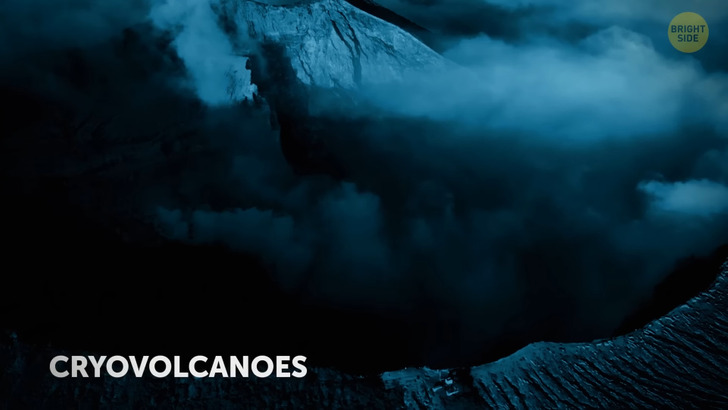
The average temperature of our planet is about 57 F. And the highest temperature ever measured was 134 F. Sounds too hot? Well, on Venus, it can go up to 900 F, which makes it the hottest planet in our solar system. It’s not hot enough to melt steel, though. It would need to be higher by 2,500 F to get there. But it’s hot enough to melt lead. And, it’s way too hot to sustain life — at least not in any form that we know. Venus is not even the closest to the Sun — it’s Mercury. But it has a super thick atmosphere that traps greenhouse gasses. It’s like you covering yourself with a pretty thick blanket in the middle of the summer.
We’re used to seeing volcanoes spewing hot molten lava. After all, that’s what they mostly do on Earth. But in space, volcanoes tend to spew methane, water, or ammonia. And these materials freeze as they erupt and eventually transform into frozen vapor and something called “volcanic snow.” I’m talking about cryovolcanoes here. You can find them on Jupiter’s moons Io and Europa, Saturn’s moon Titan, and Pluto. These volcanoes are especially active on Io, which has hundreds of vents. NASA vehicles have even captured some of these erupting in real-time. Plumes of frozen vapor coming out of them extended for about 250 miles. By the way, they just discovered another moon around Jupiter that might actually be good for farming someday. It’s named e-i-e-i-o.
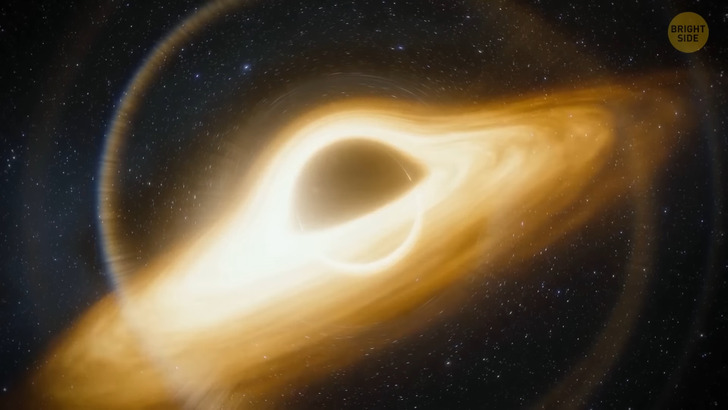
What exactly happens to the light after it disappears inside of a black hole? Photon is a particle of light. The event horizon is the boundary of a black hole. When something, say, a photon, crosses the line and enters those boundaries, it can’t escape anymore. But it doesn’t mean a black hole destroyed it. It pulls the photon in rapidly towards its center, where an enormous mass is packed into an infinitely small space. But, we’re not sure what happens to photons in such extreme conditions. It’s still one of the biggest mysteries — does a black hole destroy the light or not?
Saturn has 82 moons we know about — 53 confirmed and 29 more that are still on the waiting list to be confirmed as actual moons before they get their official names. And one of its coolest moons might be a 914-mile-wide hunk of rock called Iapetus. It’s dark on one side and bright on the other. Its lighter half is 20 times more reflective than the other one. As it turned out, the bright side is ice. The dark side is a bit more complicated. One theory says it’s dark because of particles coming from another moon, the one named Phoebe. Another theory says it could be because of heat.
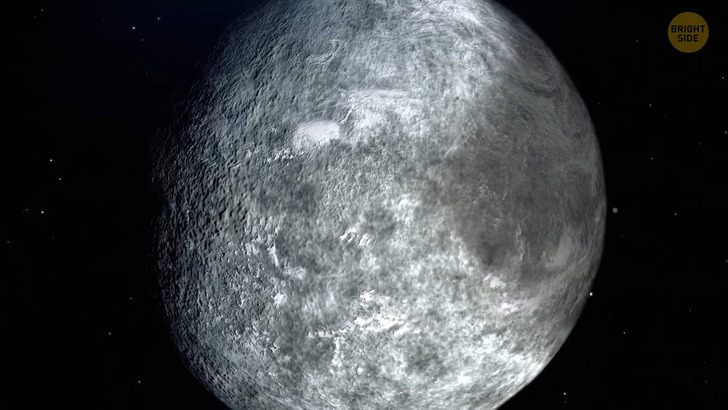
Since the Moon is rotating really slowly, its dark material is absorbing heat which makes it even darker. How big do you think a black hole can become? In theory, we can’t find an upper limit to its mass. But astronomers believe the ultra-massive black holes (UMBHs) located in the cores of certain galaxies are mostly up to 10 billion solar masses big. Recently, they even discovered these UMBHs physically can’t grow much more than this because, in that case, they would start to disrupt the accretion discs that feed them. That way, they would kinda “stuff” the source of new material.
Most people picture the Universe as somewhere between aquamarine and pale turquoise. Even some researchers thought that was the case. They managed to determine the cosmic color by combining light from more than 200,000 galaxies within two billion light-years of our planet. But the real color is actually closer to beige. Researchers got it all wrong because there was a bug in the software. It converted the cosmic spectrum into the color our eyes would see if we were exposed to it. The team defined this color as a ’cosmic latte’.











